#Women’s History
Text
As someone who likes historically-inspired clothing, I’ve sometimes heard, “Women fought to not have to dress like that! What’s wrong with you?!”
Yes- to not HAVE to. Which is good and noble and important. Except….I don’t have to. I want to.
You have the right to wear pants, or crop tops, or a sweatsuit, and I have the right to wear petticoats and corsets. and neither of us are being forced into it, because of that battle our ancestors fought
It was not a fight to dictate women’s clothing in a direction you, personally, like better
1K notes
·
View notes
Text
It took about two hours for Daina Taimina to find the solution that had eluded mathematicians for over a century. It was 1997, and the Latvian mathematician was participating in a geometry workshop at Cornell University. David Henderson, the professor leading the workshop, was modelling a hyperbolic plane constructed out of thin, circular strips of paper taped together. 'It was disgusting,' laughed Taimina in an interview.
A hyperbolic plane is 'the geometric opposite' of a sphere, explains Henderson in an interview with arts and culture magazine Cabinet. 'On a sphere, the surface curves in on itself and is closed. A hyperbolic plane is a surface in which the space curves away from itself at every point.' It exists in nature in ruffled lettuce leaves, in coral leaf, in sea slugs, in cancer cells. Hyperbolic geometry is used by statisticians when they work with multidimensional data, by Pixar animators when they want to simulate realistic cloth, by auto-industry engineers to design aerodynamic cars, by acoustic engineers to design concert halls. It's the foundation of the theory of relativity, and thus the closest thing we have to an understanding of the shape of the universe. In short, hyperbolic space is a pretty big deal.
But for thousands of years, hyperbolic space didn't exist. At least it didn't according to mathematicians, who believed that there were only two types of space: Euclidean, or flat space, like a table, and spherical space, like a ball. In the nineteenth century, hyperbolic space was discovered - but only in principle. And although mathematicians tried for over a century to find a way to successfully represent this space physically, no one managed it - until Taimina attended that workshop at Cornell. Because as well as being a professor of mathematics, Taimina also liked to crochet.
Taimina learnt to crochet as a schoolgirl. Growing up in Latvia, part of the former Soviet Union, 'you fix your own car, you fix your own faucet - anything', she explains. 'When I was growing up, knitting or any other handiwork meant you could make a dress or a sweater different from everybody else's.' But while she had always seen patterns and algorithms in knitting and crochet, Taimina had never connected this traditional, domestic, feminine skill with her professional work in maths. Until that workshop in 1997. When she saw the battered paper approximation Henderson was using to explain hyperbolic space, she realised: I can make this out of crochet.
And so that's what she did. She spent her summer 'crocheting a classroom set of hyperbolic forms' by the swimming pool. 'People walked by, and they asked me, "What are you doing?" And I answered, "Oh, I'm crocheting the hyperbolic plane."' She has now created hundreds of models and explains that in the process of making them 'you get a very concrete sense of the space expanding exponentially. The first rows take no time but the later rows can take literally hours, they have so many stitches. You get a visceral sense of what "hyperbolic" really means.' Just looking at her models did the same for others: in an interview with the New York Times Taimina recalled a professor who had taught hyperbolic space for years seeing one and saying, 'Oh, so that's how they look.' Now her creations are the standard model for explaining hyperbolic space.
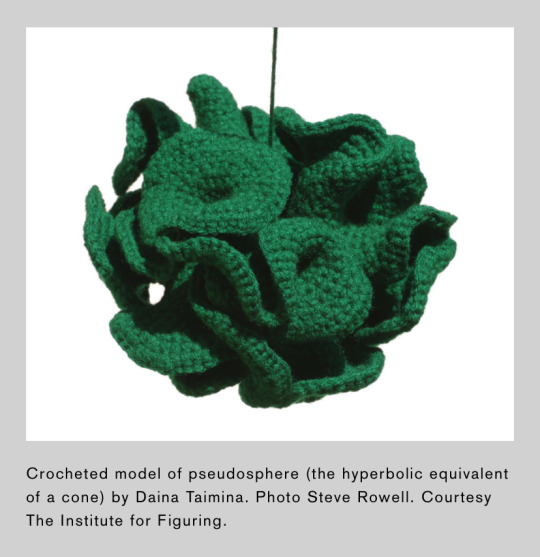
-Caroline Criado Perez, Invisible Women
Photo credit
#caroline criado perez#Daina Taimina#women in stem#women’s history#women in science#crochet#crocheting#female mathematicians#hyperbolic space
242 notes
·
View notes
Text
“No woman could have been Nietzsche or Rimbaud without ending up in a whorehouse or lobotomized.” - Dworkin
Ok but this is such a raw quote. Think about it seriously. What woman would have been allowed to ignore household chores to focus on learning and writing? What woman would have been allowed to be acerbic and controversial?
Women were paid so poorly for their work that being a spinster meant being destitute. You can’t publish your great masterpiece if you spend most of your day working and the rest barely hanging on with the misery you’re paid.
The high paying professions are closed to you. Higher education was closed to you. You could become a prostitute, and historically prostitutes for the upper class have access to more education in order to entertain wealthy man. But most prostitutes don’t serve the upper class and are subject to the same poverty as the working spinster. Even the courtesan who dared to publicly exist risked the wrath of men, because men loathe prostitutes going “outside their place.”
So you marry, and to marry you need to stamp down all your intellectual traits. You must preoccupy yourself with menial labor. You must flatter mens egos. You must have and rear children. There is no time to write or think, and your husband may destroy your work if you do.
A very small number of women (usually from upper class families) managed to write and think, against all odds. But they had to be born to good class and have very supportive family, and either avoid marriage or have a very supportive husband. In other words, the equivalent of winning successive lotteries.
If you were too out of control, you could be committed to a madhouse, or lobotimized, or drugged into submission.
The path successful women thinkers had to walk was extremely narrow; and the cliffs led to poverty, disease, abuse, death, servitude. We’ve only recently succeeded in broadening that path, thanks to the ceaseless work of women pioneers in the 19th and 20th centuries that broke legal and social chains. And there are more chains to break yet. Too many great thinkers are doubtless still being lost by virtue of their sex, race, class, disability, country, etc.
Don’t forget what we’ve lost. Keep fighting. We can make the narrow path into a supportive field.
243 notes
·
View notes
Text
The WAVES of Change: Women's Valiant Service in World War II 🌊
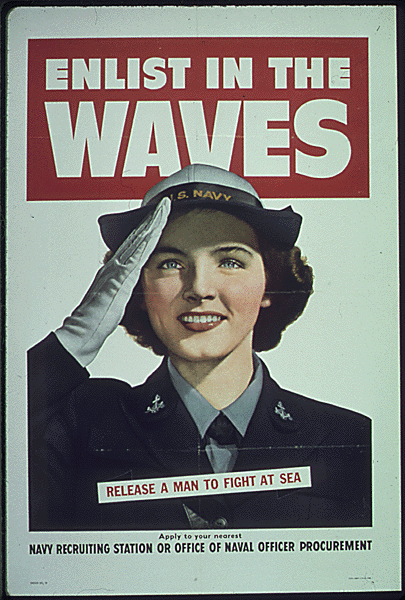
When the tides of World War II swelled, an unprecedented wave of women stepped forward to serve their country, becoming an integral part of the U.S. Navy through the Women Accepted for Volunteer Emergency Service (WAVES) program. This initiative not only marked a pivotal moment in military history but also set the stage for the transformation of women's roles in the armed forces and society at large. The WAVES program, initiated in 1942, was a beacon of change, showcasing the strength, skill, and patriotism of American women during a time of global turmoil.

The inception of WAVES was a response to the urgent need for additional military personnel during World War II. With many American men deployed overseas, the United States faced a shortage of skilled workers to support naval operations on the home front. The WAVES program was spearheaded by figures such as Lieutenant Commander Mildred H. McAfee, the first woman commissioned as an officer in the U.S. Navy. Under her leadership, WAVES members were trained in various specialties, including communications, intelligence, supply, medicine, and logistics, proving that women could perform with as much competence and dedication as their male counterparts.
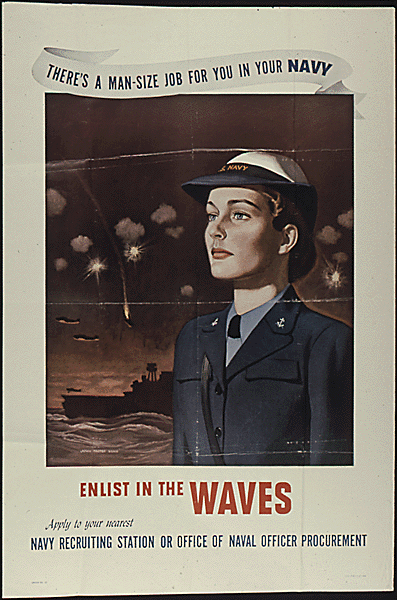
The impact of the WAVES program extended far beyond the war effort. Throughout their service, WAVES members faced and overcame significant societal and institutional challenges. At the time, the idea of women serving in the military was met with skepticism and resistance; however, the exemplary service of the WAVES shattered stereotypes and demonstrated the invaluable contributions women could make in traditionally male-dominated fields. Their work during the war not only contributed significantly to the Allies' victory but also laid the groundwork for the integration of women into the regular armed forces.

The legacy of the WAVES program is a testament to the courage and determination of the women who served. Their contributions went largely unrecognized for many years, but the program's impact on military and gender norms has been profound. The WAVES paved the way for future generations of women in the military, demonstrating that service and sacrifice know no gender. Today, women serve in all branches of the U.S. military, in roles ranging from combat positions to high-ranking officers, thanks in no small part to the trail blazed by the WAVES.


The WAVES program was more than just a wartime necessity; it was a watershed moment in the history of women's rights and military service. The women of WAVES not only supported the United States during a critical period but also propelled forward the conversation about gender equality in the armed forces and beyond. Their legacy is a reminder of the strength and resilience of women who rise to the challenge, breaking barriers and making waves in pursuit of a better world.
Read more: https://prologue.blogs.archives.gov/2023/11/06/historic-staff-spotlight-eunice-whyte-navy-veteran-of-both-world-wars/
201 notes
·
View notes
Text



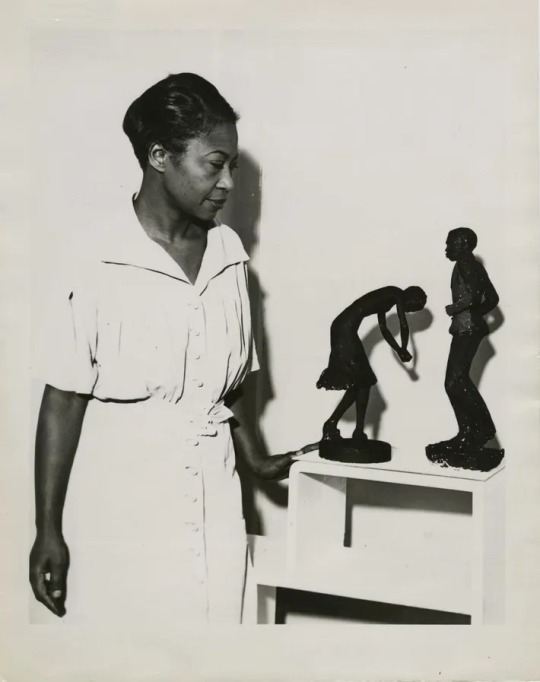
Renaissance Woman Augusta Savage (1892-1962), known as a sculptor, artist, educator, and activist, started crafting figures from the natural red clay of her hometown, Green Cove Springs, Florida, during her childhood.
159 notes
·
View notes
Text

It’s like “gender” is *actually* a social construct or some shit.
And not only is what any gender means very specific to a specific culture, regardless of the phenotype current people link it to, but even then not everyone in that given culture expresses it the same way, and some people *always* push what that gender and gender expression means.
Because “gender” is not only a social construct; it is a *continuously evolving* social construct.
Queer historians are good at noting that “although we might call x a trans man/a gay man/a nonbinary person etc etc if they lived today, these ideas did not make sense in the social context they lived in”. Historians in general need to get better at realising and elucidating that our modern Western concepts of “man” and “woman” are very different from, and in many ways may not even be recognisable, in, say, medieval Europe, Ancient Rome, medieval/early modern Incan societies, early modern Madagascar, prehistoric Pacific Islander societies, Heian period Japan etc etc, just because we are broadly applying them to many people with similar biological phenotypes.
#prehistoric history#history#gender#gender in history#queer history#the fucking victorians and their long fucking shadow in history#women’s history#gender is a continuously evolving social construct
292 notes
·
View notes
Text
Women literally risked rape and imprisonment to just wear pants and now we have women acting like wearing jeans makes them not women anymore and I’m supposed to be fine with this??!

91 notes
·
View notes
Text
This is why we still need Women’s History Month.
By Martha Gill
What was life like for women in medieval times? “Awful” is the vague if definite answer that tends to spring to mind – but this is an assumption, and authors have been tackling it with new vigour.
The Once and Future Sex: Going Medieval on Women’s Roles in Society by Eleanor Janega, and The Wife of Bath: A Biography by Marion Turner both contend that women were not only bawdier but busier than we thought: they were brewers, blacksmiths, court poets, teachers, merchants, and master craftsmen, and they owned land too. A woman’s dowry, Janega writes, was often accompanied with firm instructions that property stay with her, regardless of what her husband wanted.
This feels like a new discovery. It isn’t, of course. Chaucer depicted many such cheerfully domineering women. The vellum letter-books of the City of London, in which the doings of the capital from 1275 to 1509 were scribbled, detail female barbers, apothecaries, armourers, shipwrights and tailors as a matter of course. While it is true that aristocratic women were considered drastically inferior to their male equivalents – traded as property and kept as ornaments – women of the lower orders lived, relatively, in a sort of rough and ready empowerment.
It was the Renaissance that vastly rolled back the rights of women. As economic power shifted, the emerging middle classes began aping their betters. They confined their women to the home, putting them at the financial mercy of men. Female religious power also dwindled. In the 13th century seeing visions and hearing voices might get a woman sainted; a hundred years later she’d more likely be burned at the stake.
“When it comes to the history of gender relations, storytellers portray women as more oppressed than they actually were”
Why does this feel like new information? Much of what we think we know about medieval times was invented by the Victorians, who had an artistic obsession with the period, and through poetry and endless retellings of the myth of King Arthur managed somehow to permanently infuse their own sexual politics into it. (Victorian women were in many respects more socially repressed than their 12th-century forebears.)
But modern storytellers are also guilty of sexist revisionism. We endlessly retread the lives of oppressed noblewomen, and ignore their secretly empowered lower-order sisters. Where poorer women are mentioned, glancingly, they are pitied as prostitutes or rape victims. Even writers who seem desperate for a “feminist take” on the period tend to ignore the angle staring them right in the face. In her 2022 cinematic romp, Catherine called Birdy, for example, Lena Dunham puts Sylvia Pankhurst-esque speeches into the mouth of her 13th-century protagonist, while portraying her impending marriage – at 14 – as normal for the period. (In fact the average 13th-century woman got married somewhere between the ages of 22 and 25.)
But we cling tight to these ideas. It is often those who push back against them who get accused of “historical revisionism”. This applies particularly to the fantasy genre, which aside from the odd preternaturally “feisty” female character, tends to portray the period as, well, a misogynistic fantasy. The Game of Thrones author George RR Martin once defended the TV series’ burlesque maltreatment of women on the grounds of realism. “I wanted my books to be strongly grounded in history and to show what medieval society was like.” Oddly enough, this didn’t apply to female body hair (or the dragons).
This is interesting. Most of our historical biases tend to run in the other direction: we assume the past was like the present. But when it comes to the history of gender relations, the opposite is true: storytellers insist on portraying women as more oppressed than they actually were.
“The history of gender relations might be more accurately painted as a tug of war between the sexes”
The casual reader of history is left with the dim impression that between the Palaeolithic era and the 19th century women suffered a sort of dark age of oppression. This is assumed to have ended some time around the invention of the lightbulb, when the idea of “gender equality” sprang into our heads and right-thinking societies set about “discovering” female competencies: women – astonishingly – could do
things men could do!
In fact the history of gender relations might be more accurately painted as a tug of war between the sexes, with women sometimes gaining and sometimes losing power – and the stronger sex opportunistically seizing control whenever it had the means.
In Minoan Crete, for example, women had similar rights and freedoms to men, taking equal part in hunting, competitions, and celebrations.
But that era ushered in one of the most patriarchal societies the planet has ever known – classical Greece, where women had no political rights and were considered “minors”.
Or take hunter-gatherer societies, the source of endless cod-evolutionary theories about female inferiority. The discovery of female skeletons with hunting paraphernalia has disproved the idea that men only hunted and women only gathered – and more recently anthropologists have challenged the idea that men had higher status too: women, studies contend, had equal sway over group decisions.
This general bias has had two unfortunate consequences. One is to impress upon us the idea that inequality is “natural”. The other is to give us a certain complacency about our own age: that feminist progress is an inevitable consequence of passing time. “She was ahead of her time,” we say, when a woman seems unusually empowered. Not necessarily.
Two years ago, remember, sprang up one of the most vicious patriarchies in history – women were removed from their schools and places of work and battoned into homes and hijabs. And last year in the US many women lost one of their fundamental rights: abortion. (Turns out it was pro-lifers, not feminists, who were ahead of their time there.)
Both these events were greeted with shock from liberal quarters: how could women’s rights be going backwards? But that only shows we should brush up on our history. Another look at medieval women is as good a place to start as any.
Martha Gill is a political journalist and former lobby correspondent
#Women’s History#books for women#The Once and Future Sex: Going Medieval on Women’s Roles in Society#Eleanor Janega#The Wife of Bath: A Biography#Marion Turner
706 notes
·
View notes
Text
“The women are everywhere—plays, public walks, libraries. You can see pretty women in the scholar’s study room. . . . A woman, in order to know what is due her and what power she has, must live in Paris for six months.”
— Napoleon in a letter to his brother, Joseph
Source: J. Christopher Herold, The Age of Napoleon
#the emperor has spoken ☝️#napoleon#napoleon bonaparte#joseph bonaparte#Joseph#J. Christopher Herold#herold#Paris#napoleonic era#napoleonic#first french empire#french empire#france#women’s history#19th century#history#Napoleon’s correspondence#letter#Napoleon’s quotes#Napoleon and women#women#Napoleon’s brothers#the age of Napoleon
117 notes
·
View notes
Text
March is Women’s History Month and the first newspaper in the United States that was edited by and published for women was called “The Lily.” Published monthly in Seneca Falls, New York, the driving force behind The Lily was Amelia Bloomer.
While the newspaper initially focused on spreading ideals of temperance, it soon broadened its attention to include many women’s rights issues of the time including suffrage and clothing reform. Circulation of the paper grew as discussions of a certain clothing outfit were published and popularized by Amelia Bloomer called “bloomers.”
The distribution of The Lily rose from 500 printed copies per month to 4,000 per month because of the bloomers dress reform controversy. The newspaper moved to different locations and had different owners from 1853 until The Lily published its final edition on December 15, 1856.
In this video, Jared discusses the history of The Lily and letterpress prints “THE LILY” using 15 line wood type made by the Hamilton Wood Type Company in the 1880s. This was printed with black rubber base ink using our Washington hand press, which is a very similar press that would have been used to print the newspaper.
#women’s history month#history#museum#sacramento#art#letterpress#printing#asmr#printmaking#typography#women’s history#newspaper
108 notes
·
View notes
Text


Wartime post cards (L: 1918, R: N/A) by Douglas Temptest (1887 - 1954)
#was watch a video on the history of the mannish woman and the first one came up so i did some digging#love lesbians will take your wives type posters from history#history#women’s history#lgbt history#archive#op.txt
244 notes
·
View notes
Text
The single most impressive fact about the attempt by American women to obtain the right to vote is how long it took. From its earliest beginnings in the public speaking of Fanny Wright in the 1820s and the Grimké sisters in the 1830s, through the complex history of equal rights suffrage associations led by such woman's-rights pioneers as Lucy Stone, Susan Anthony, and Elizabeth Stanton, it was indeed a "century of struggle" (Flexner 1959) before the suffrage amendment to the Constitution was ratified and women could first participate in a national election. Of the first generation pioneers, only Antoinette Brown Blackwell lived to cast her ballot in that first election in 1920.
-Alice S. Rossi, The Feminist Papers: From Adams to de Beauvoir
251 notes
·
View notes
Text


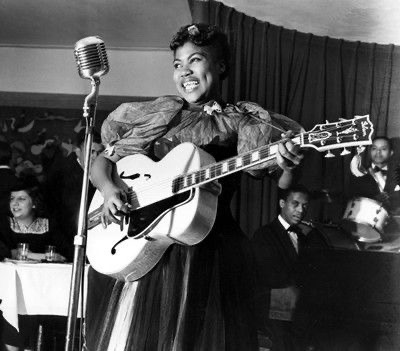

Let’s give the true creator of rock and roll— Sister Rosetta Tharpe her flowers!
#sister rosetta tharpe#godmother of rock and roll#music history#black history#women’s history#rock and roll
239 notes
·
View notes
Text
Skyward Bound: The Willa Beatrice Brown Story ✈

Celebrating Black History Month, we honor Willa Beatrice Brown, a trailblazer in aviation and civil rights activism. Willa Brown, born in 1906 in Glasgow, Kentucky, shattered racial and gender barriers in the skies and became the first African American woman to earn a commercial pilot’s license in the United States. Her unwavering dedication to integrating aviation programs and empowering future pilots through education and advocacy has cemented her as a pivotal figure in American history.

Willa Brown’s journey began with a passion for flying, leading her to earn her pilot’s license in 1938. Together with her husband, Cornelius Coffey, she founded the Coffey School of Aeronautics in Chicago, where they trained African American men and women, providing a foundation for the illustrious Tuskegee Airmen during World War II.
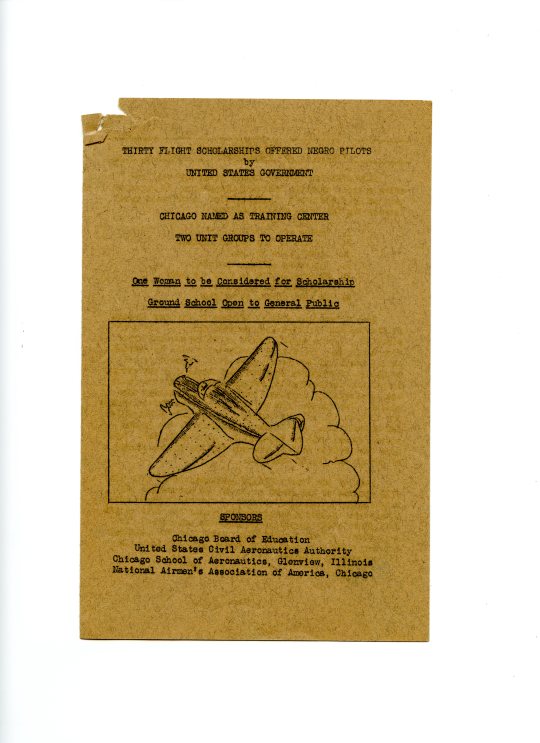
Brown’s advocacy extended to her role as the first African American woman to receive a commission as a lieutenant in the Civil Air Patrol and her political endeavors to integrate the armed forces, culminating in President Harry Truman signing Executive Order 9981 in 1948 to desegregate the military.
For those interested in exploring more about Willa Beatrice Brown’s incredible life and impact, the National Archives holds a treasure trove of resources:
#Black History Month#African American History#National Archives#Women’s History#Willa Beatrice Brown#Willa B. Brown#Aviation#BHM#BlackHistoryMonth#tuskegee airmen
157 notes
·
View notes
Text
So according to various evolutionary models I have seen, they pinpoint the first childbearing/birthing animal to a female shrew-like mammal in the middle Jurassic period. And Idk what the science behind that would look exactly, but it got me wondering about how the uterus evolved with that ability.
I know a lot of feminists and women’s activists argue that the uterus is not primarily a childbearing organ. But maybe we should respect the fact that it kinda is? Maybe it isn’t a sexist thing to say if it’s literally ingrained in our normal biology?
Regardless of whether you have children, a healthy and functioning uterus has health benefits of all sorts for the woman who has one. I’m not saying that if the uterus is primarily for pregnancy then you have an obligation to become pregnant. BUT, the uterus was formed before, during, and after our mammalian ancestors gained the ability to birth live offspring. That is a fact, and you know what else?
This switch from egg laying to gestation is likely what enabled our ancestors to survive the meteor strike 65 millions years ago. Little pregnant Juramaia were able to flee into caves and other safe crevices while the world burned and froze over and struggled to equalize. Countless lives of our own ancestors in turn were able to share space more effectively by not having to leave behind eggs to guard in what little room they had.
It was the childbearing purpose of the uterus that has allowed humanity to thrive and survive. This primal tradition can even be seen in historical and present day women figures fighting for changes and their own destinies while pregnant!
I’m not saying that pregnancy is all sunshine and roses, or that it should be mandatory. I’m just saying that this ancient gift should be respected, at the least, for literally and figuratively birthing us. That we should respect the power our uterus holds for our own lives, just that fact that we COULD birth and raise little humans who can change the future.
The uterus is a childbearing organ that gave us life. I am okay with that; maybe if society was too, we can make it into a new age of true equity.
119 notes
·
View notes
Text

On this day, Polish and naturalised-German Marxist revolutionary, Rosa Luxemburg was born! She co-founded the Spartacus League which became the Communist Party of Germany. She was a key figure in the 1919 Spartacist uprising and was later jailed and executed in response.
29 notes
·
View notes